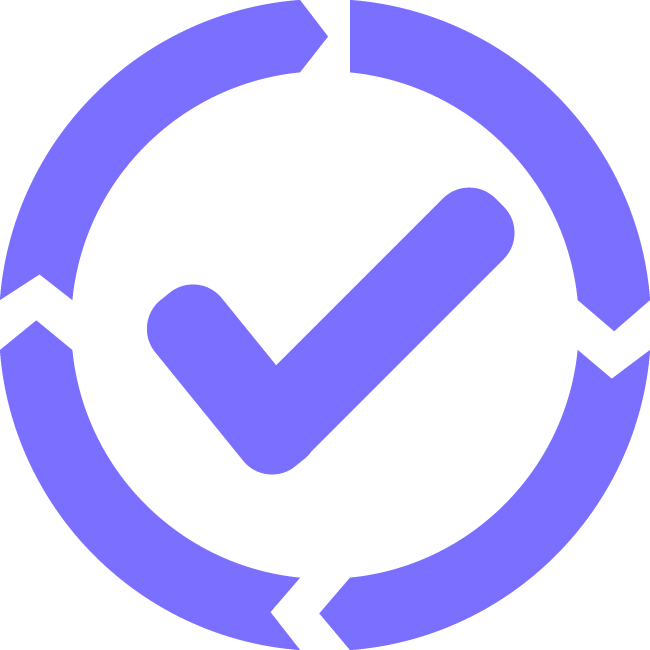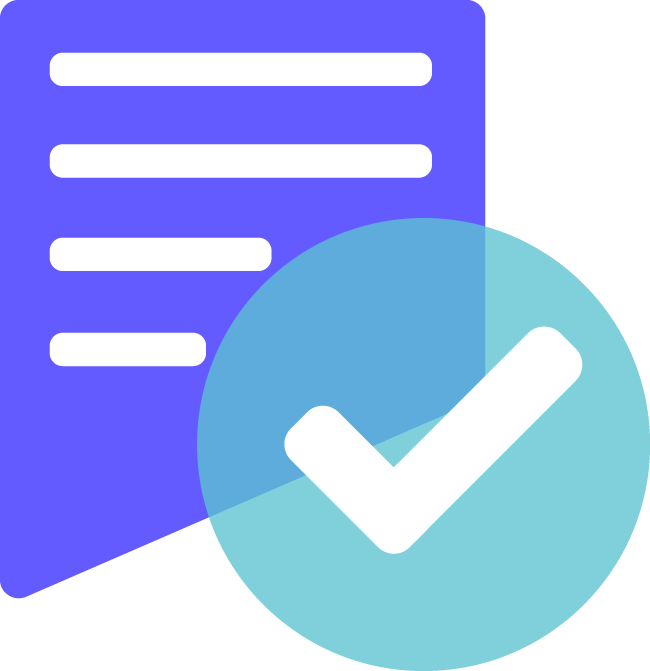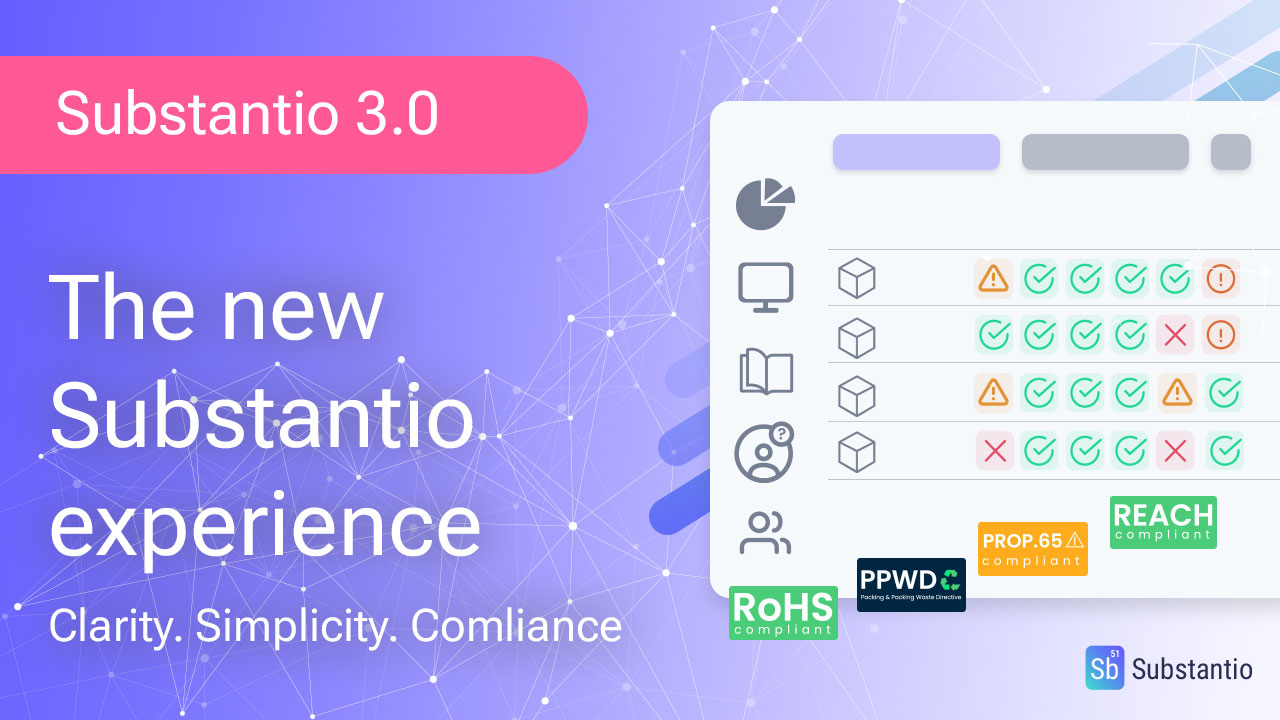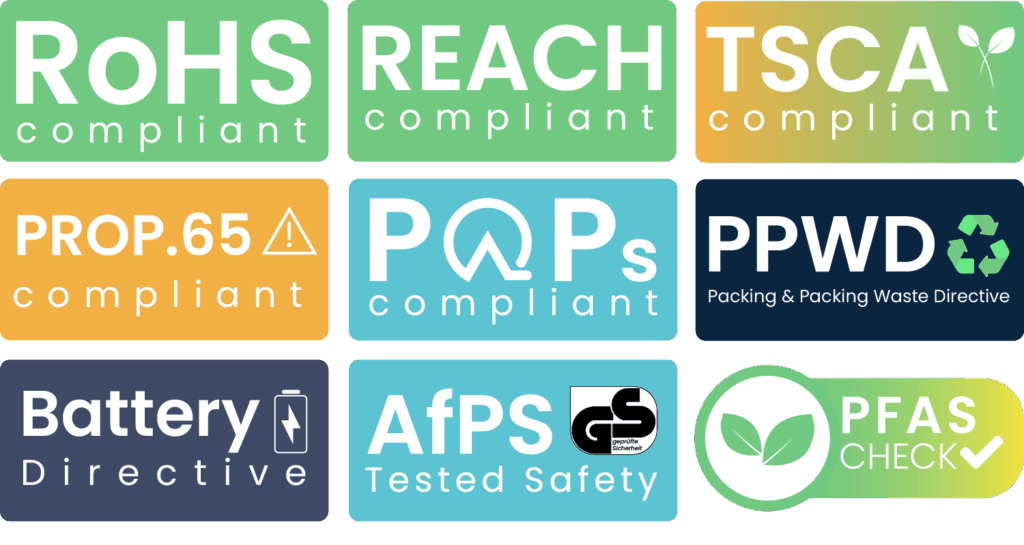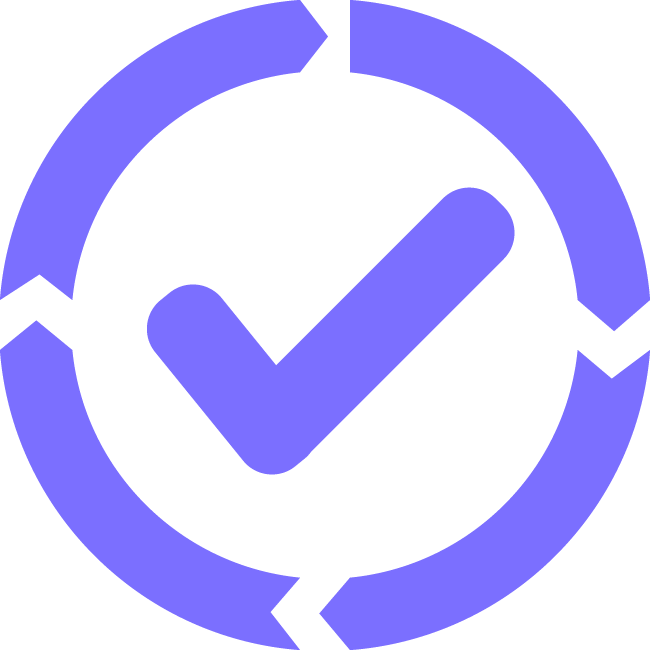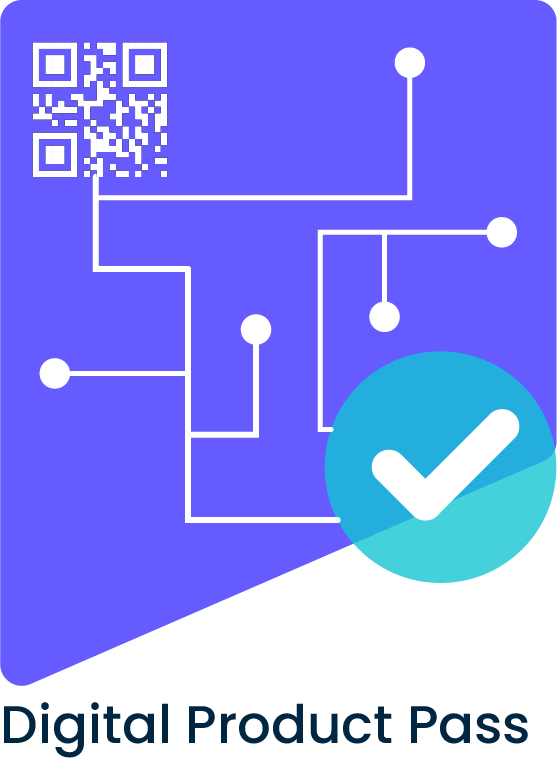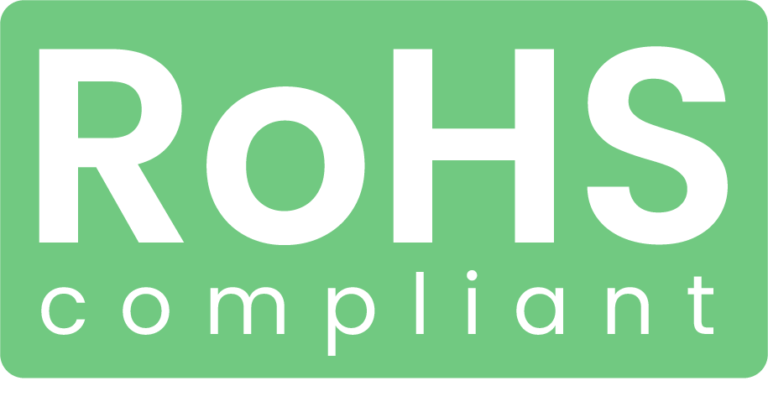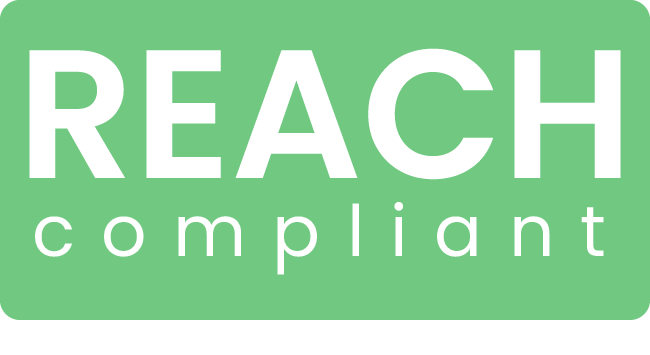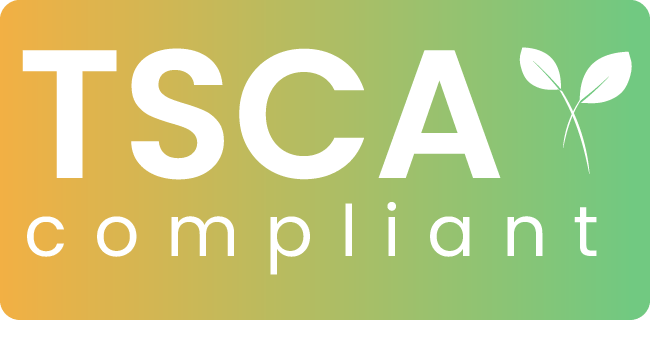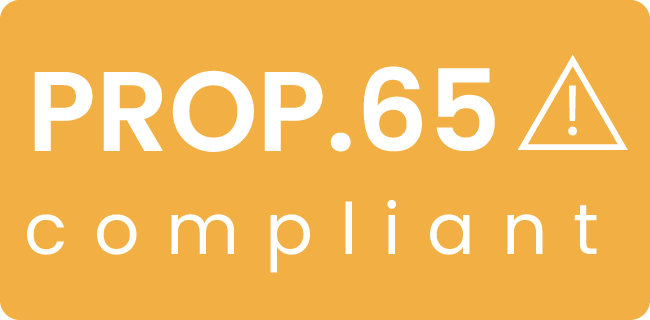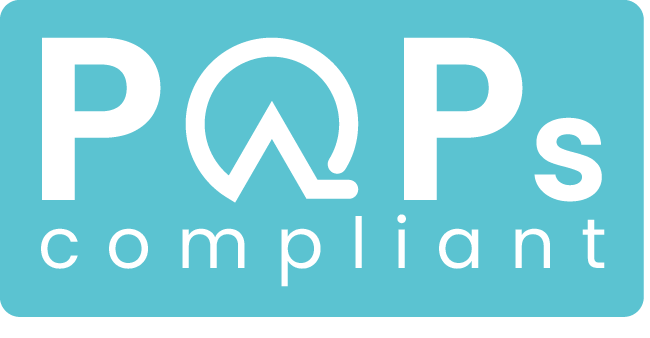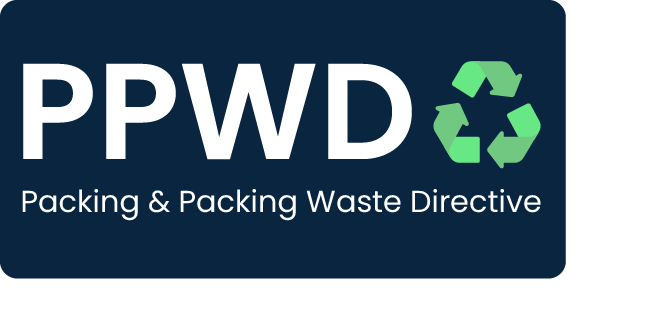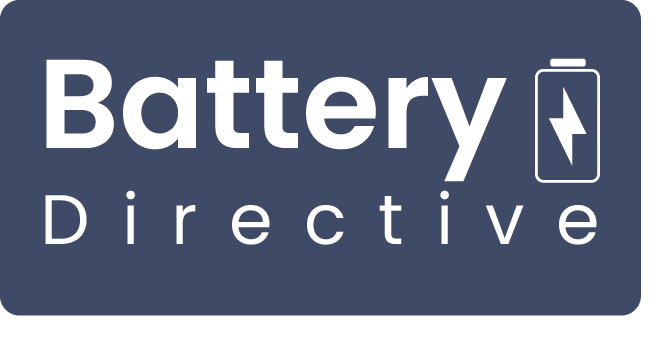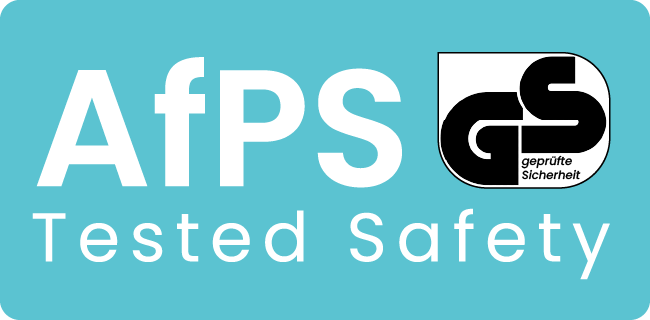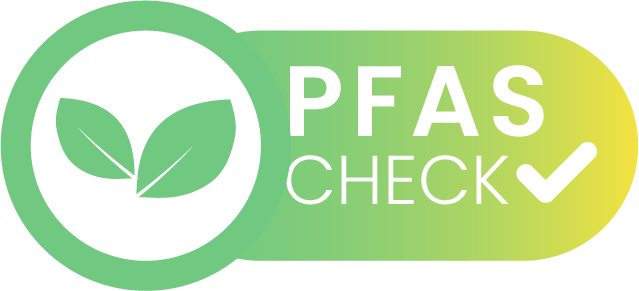Product & Material Compliance for Secure Market Access
Material Compliance costs nerves, time, and in the worst case, market access. The Substantio software automates what others still do manually: supplier communication, SCIP submissions, Digital Product Passports – your all-in-one solution for REACH and RoHS compliance, TSCA & more.
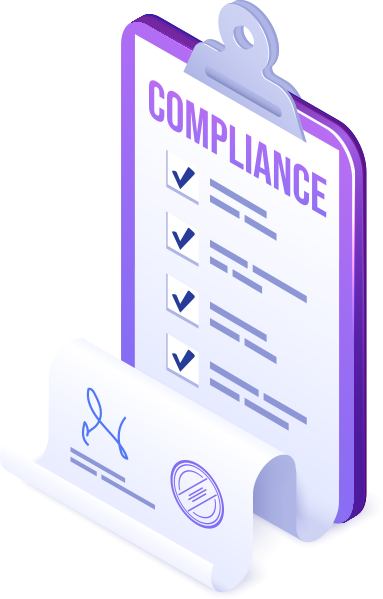
Make compliance easy.
With our Product & Material Compliance software, you automate processes, ensure data quality, and reliably meet international regulations.
Your benefits:
- Product & Material Compliance for assemblies, components, and BOMs
- One platform, one price: unlimited users, suppliers, and declarations
- Automation & seamless integration with PLM/ERP systems
- High-quality data from your supply chain & established material databases
- Automated legal reporting such as SCIP submissions or Digital Product Passports
REACH, RoHS, TSCA, Prop 65 – Global Compliance Made Simple
The EU continuously tightens its substance regulations: PFAS restrictions, expanded SVHC lists, new reporting obligations such as the Digital Product Passport. Companies relying on manual processes today will fall behind tomorrow. With Substantio, you’re prepared: international regulatory changes are updated automatically, and new rules are integrated seamlessly.
The Substantio Software:
- Can integrate and apply any regulation
- Automatically checks your BOMs
- Provides legally required compliance documentation
- Delivers evaluations for ESG and LCA reporting
The All-in-One Solution for Product & Material Compliance
With Substantio, you rely on the most comprehensive tool for Product & Material Compliance. Our software covers every level – from clean BOMs and supplier data to international regulations and legal reporting.
In five key areas, we guide you reliably through the entire compliance process:
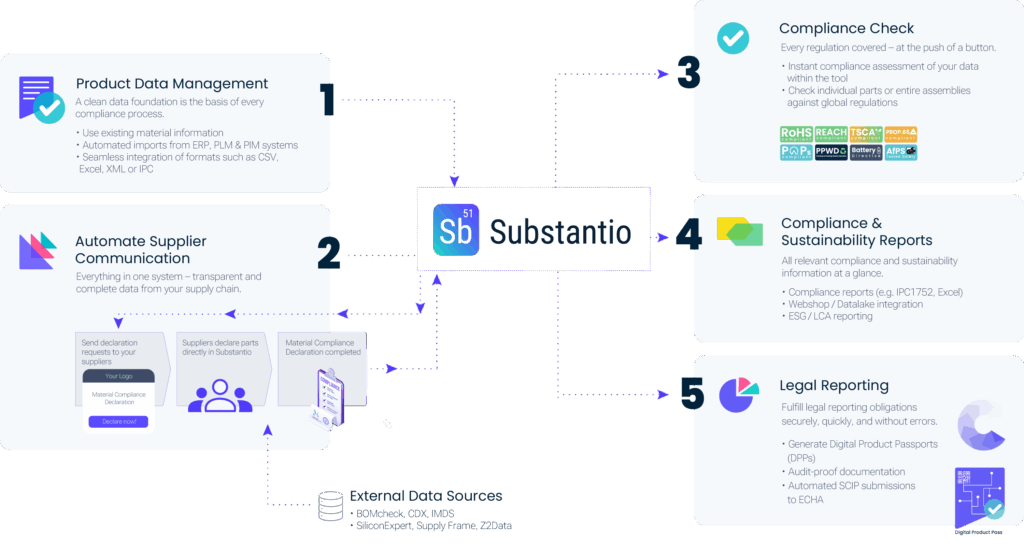
Our Solutions for Your Product Compliance
Substantio meets all Material Compliance requirements through a combination of data management, automation, and expert know-how.
Product Data Management
BOM analysis, PLM/ERP integration, automated data maintenance
Digital Product Passport
Central portal to automatically create and provide DPPs
Supply Chain Communication
Automated supplier requests, status tracking, branding
SCIP Data & Reporting
Automated SVHC checks, direct ECHA integration
Sustainability & ESG
CO₂ data, LCA, CSRD, Digital Product Passport, reporting & analytics for LCAs
Export Compliance
Dual-Use, ITAR, customs regulations, automated checks

“Substantio is our central building block for meaningful Product & Material Compliance – from export compliance to CO₂ data.”
Stephan Lamperski, CEO, Substantio GmbH

All the information you need from supply chains is captured by Substantio – seamlessly enriched with data from established databases.”
Simon Brack, Director Environmental Compliance & Market Development, Substantio GmbH

“With Substantio we make Product Compliance and LCAs calculable. Even complex BOMs can be analyzed at the push of a button – saving our customers time, cost, and avoiding expensive individual LCA assessments.”
Martin Susol, Software Architect, Substantio GmbH
Turn Material Compliance into Your Strength – Not Your Problem!
In your free initial consultation, we clarify:
✓ Where does your company currently stand on Material Compliance?
✓ Which regulations are relevant for you?
✓ What does your system landscape look like?
✓ How can Substantio specifically support you?
FAQ's

What is the difference between Product Compliance and Material Compliance?
Product Compliance ensures that a product meets all relevant regulations, standards, and laws, such as product safety, labeling, packaging, or environmental requirements.
Material Compliance is the basis for Product Compliance and goes one level deeper: it checks the materials and substances used for critical elements such as lead, chromium, or PFAS – and whether they meet prescribed limits.
Product Compliance
- Focus: the entire product
- Topics: product safety, labeling, packaging, environmental requirements
- Goal: ensure the product can be legally marketed
- Example: CE marking
Material Compliance
- Focus: materials & substances
- Topics: critical substances (REACH, RoHS, PFAS, etc.)
- Goal: proof that materials are compliant – foundation for Product Compliance
- Example: SCIP submission to ECHA
What does Material Compliance mean?
Material Compliance means that the materials and substances used in a product comply with applicable legal requirements. These include REACH, RoHS, TSCA, or California Prop 65. The goal is to avoid critical substances such as lead, chromium, or PFAS, or to stay within their limits.
Why is Material Compliance the basis for Product Compliance?
Without Material Compliance, full Product Compliance is impossible. Only when materials and substances are known and assessed at substance level can BOMs or assemblies be declared compliant and marketed legally.
Which regulations are part of Material Compliance?
How does Substantio support Material Compliance?
Our software automates the collection and evaluation of material and substance data. Supplier communication, BOM analysis, and reports such as SCIP are generated with just a few clicks – saving time, improving data quality, and ensuring market access.
What are the advantages of automated Material Compliance over manual processes?
Automated processes reduce errors, save time, and ensure that the latest regulations are always applied. Manual Excel-based processes are error-prone and make audits difficult.
Does Material Compliance also support sustainability and ESG reporting?
Yes. Material Compliance provides the foundation for sustainability reports and ESG KPIs. Transparency at substance level enables efficient CO₂ balances (LCA), CSRD reports, and Digital Product Passports (DPP).

